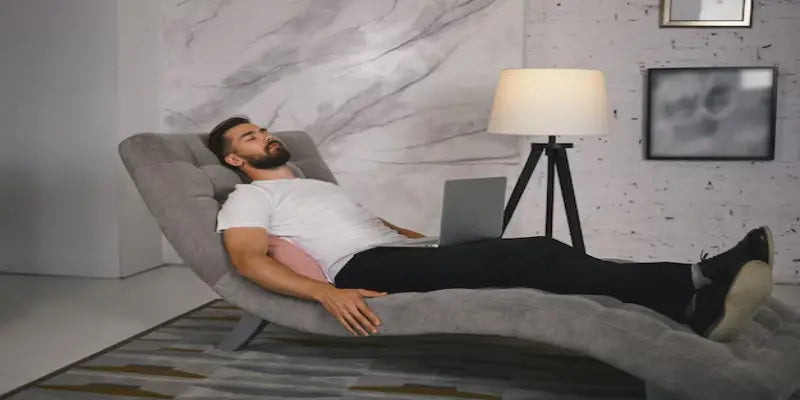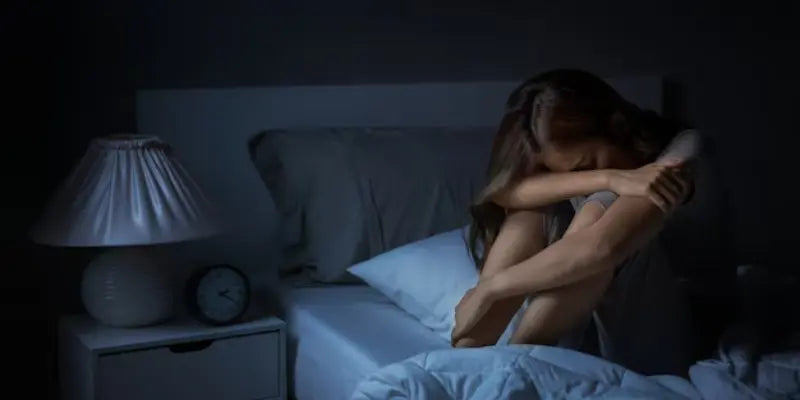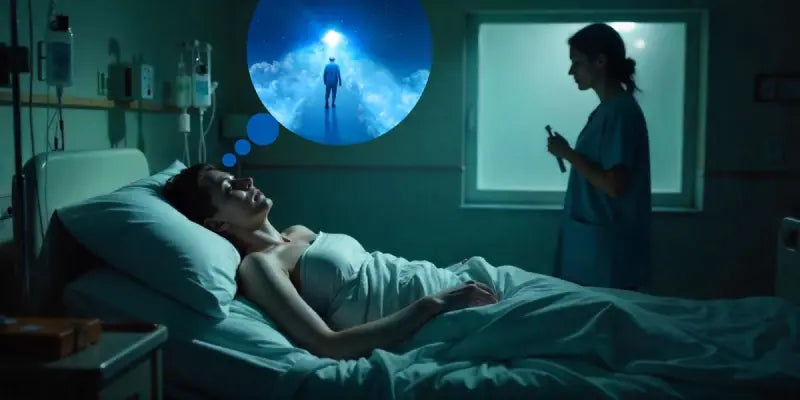
Sleep Like an Astronaut in the Zero Gravity Sleep Position
The zero gravity sleep position imitates weightlessness by adjusting the legs and head to an elevated position. This alignment minimizes pressure, augments circulation, and positions the spine. As per sleep specialists and physical therapists, it is the best sleeping position for deep sleep and pain relief.
People struggling with joint discomfort, backache, or sleep-disordered breathing benefit the most from such sleep positions. Only with an adjustable bed that provides optimal back support, the zero gravity sleep position can be achieved.
This guide talks about how the zero gravity sleep position works, the benefits, and why it is the best sleeping position to get high quality siesta and be fit as a fiddle.
What is Sleeping in Zero Gravity?
The zero gravity sleep position changes the head and legs to an elevated position. This position mimics the weightlessness of astronauts in space. From curtailing the spinal pressure, and amplifying the circulation, this sleep position boosts comfort too. Inspired by NASA, it modifies the body to reduce stress/pressure on joints and muscles.
In this best sleeping position, the knees and torso play a crucial role. The knees bend moderately, and the torso leans upward. This builds a neutral posture that sustains the spine.
Note: Most people prefer adjustable beds to get to this sleeping position. It is widely suggested for those pursuing better rest and enhanced overall well-being. Using a microfiber pillow significantly helps achieve a zero-gravity sleep position.
Origins of the Zero Gravity Sleep Position
NASA studied Neutral Body Positions (NBP) to augment astronaut well-being. These studies led to the discovery of the zero gravity sleep position, a sleeping posture that scales back strain by imitating the body’s natural alignment in microgravity.
As per researchers, weightlessness curtails physical stress. The best sleeping position realigns the spine and reduces pressure. Leveraging this data, NASA designed spacecraft workstations and living quarters.
The zero gravity sleep position limits the strain on the body. Several industries now use this sleep position to amplify comfort and relaxation for people on Earth.
How to Sleep in the Zero Gravity Sleep Position?
The zero gravity sleep position is all about adjusting the position of the head and legs to an elevated position. This sleep position builds a 120-degree angle between the upper body and legs. The head is moderately raised, and the knees bend toward the chest. Using a Microfiber Pillow is an added benefit in this scenario.
Pillows play a pivotal role in achieving this best sleeping position. Put one under the head and one under the upper back. Place another under the knees for support. However, a modifiable bed provides a better solution.
An adjustable base raises the head and legs with the press of a single button. This setup upholds the zero gravity sleep position without consistent pillow alignment.
What are the Primary Benefits of the Zero Gravity Sleep Position?
The zero gravity sleep position improves comfort and reduces strain. NASA research shows this sleep position supports the body’s natural posture. Many hospitals and homes now use this best sleeping position for better rest.
Improved Breathing
The zero gravity sleep position keeps the head elevated. This sleep position assists in opening airways and curbs snoring. People with sleep-related breathing disorders benefit from this sleeping position. Furthermore, it prevents airway blockages and steps up the oxygen flow.
Selecting the zero gravity sleep position reduces discomfort and supports overall health.
Migraine Relief
This sleep position also assists in curbing migraines by optimizing circulation and inhibiting fluid retention. Several migraine triggers arise from changes in brain pressure.
Here is how zero-gravity sleep provides migraine relief:
- Avoids Fluid Buildup: Maintains the head in an elevated position to minimize pressure.
- Regulates Circulation: Reduces blood flow shifts related to migraines.
- Mitigates Morning Headaches: Lessens strain triggered by lying flat.
- Sustains Hormonal Balance: Helps counter migraine triggers in women.
- Supports Natural Drainage: Aids the body in releasing pressure after nausea.
Note: Sleeping elevated for a few days using a Microfiber Pillow may improve migraine symptoms and overall comfort.
Prevents Snoring
Head in an elevated position opens the nasal airways adequately. This eases the obstructions for better breathing. Zero gravity sleep assists those with sleep apnea and nasal blockage for an uninterrupted slumber.
Not to mention, bed partners endure lesser disturbances.
Relieves Neck & Back Pain
Zero Gravity sleep uniformly shares weight along the spine. It prevents pressure accumulation and displacement.
Additionally, it endorses optimum spinal health and improves body posture in the long run.
Stops stomach Acid Reflux & Heartburn
Keeps the body at a specific angle and prevents stomach acid formation.
Furthermore, this sleep position alleviates discomfort triggered by indigestion. It also enables smooth and uninterrupted sleep without reflux indicators.
Who Benefits From Sleeping in Zero Gravity?
Less gravitational pull helps to keep the spinal positioning in a comfortable position and boosts blood circulation during sleep. As a result, sleeping in a zero gravity sleep position endorses relaxation and sound sleep.
Here’s who could benefit from sleeping in zero gravity:
People with Sleep Disorders & Snoring Problems
This best sleeping position is a boon for individuals with snoring issues. Improved airflow helps avoid sleep turbulence and endorses deeper sleep.
People with Allergies or Sinus Issues
Keeping the upper body at an elevated level and sleep helps prevent any sinus congestion. This sleep position minimizes congestion and augments airflow via the windpipe. Furthermore, it alleviates nighttime uneasiness triggered by sinus buildup, allergies, or simple cold and flu.
Athletes Seeking Optimal Recovery
A proper restful sleep is fundamental for muscle repair. The zero gravity sleep position lowers any kind of body strain, promoting REM cycles and deep sleep. For athletes, this sleep position provides overnight recovery and rebuilds muscle tissues.
People with Less Mobility
Getting on the bed is easy but getting out is difficult for some. The zero gravity sleep position helps people with less or poor mobility to sleep in a comfortable position. Due to an adjustable base, changing from a lying down position for an immobile person to a seated posture becomes convenient.
Final Words
The zero gravity sleep position provides multiple benefits to people, however, individual preferences matter. It is always recommended to consult a doctor before trying this best sleeping position for specific requirements. This sleep position also increases comfort and relaxation while reading, watching TV, working in bed, etc.
FAQs
Q1: Does sleeping in zero gravity require a special bed?
Ans: No. Sleeping in zero gravity does not require a special bed. The zero gravity position can be acquired with pillows, any durable reclining chair, or other household stuff.
Q2: Who should avoid sleeping in a Zero Gravity Position?
Ans: Those who sleep on their back benefit the most from the zero gravity sleep position. However, side and stomach sleepers are likely to feel uncomfortable with a zero gravity position. They need to change the settings prior to agreeing to this sleep position for the whole night.
Q3: Is Sleeping in the Zero Gravity Sleep Position considered safe?
Ans: Yes, sleeping in the zero gravity sleep position is safe.
Q4: What is the difference between Gravity and Zero Gravity Sleep Position?
Ans: Gravity puts pressure on the spine and limits the blood circulation. The zero gravity sleep position minimizes the gravitational pressure, enhances blood flow, and improves relaxation.







